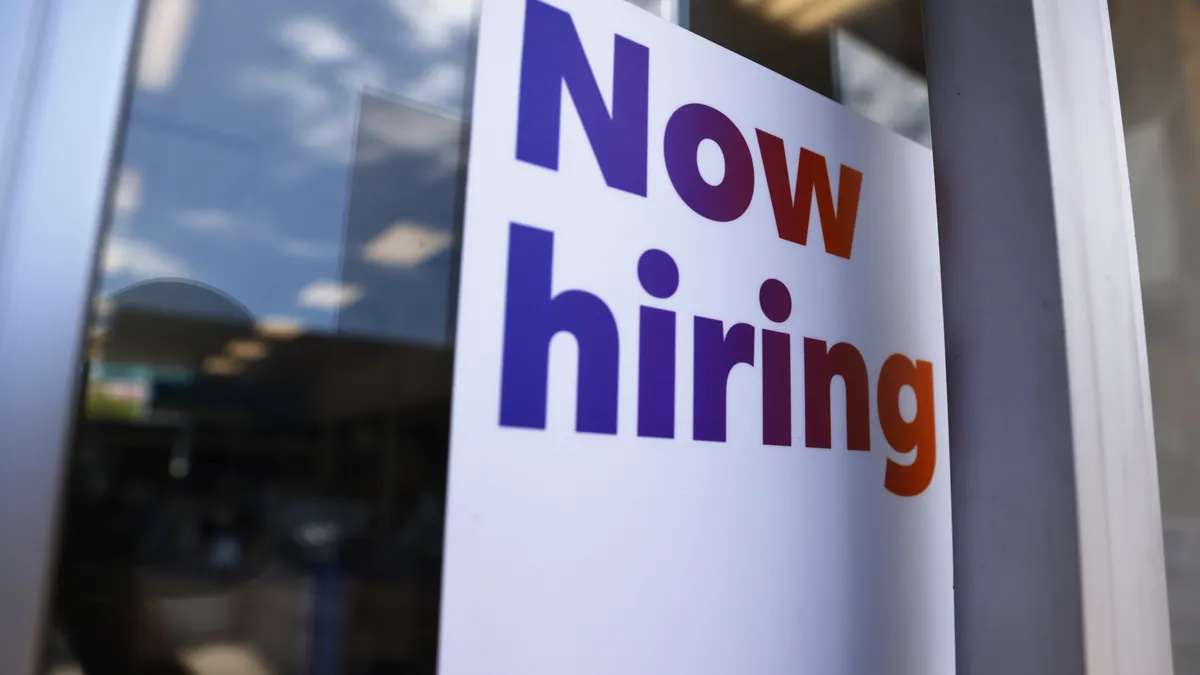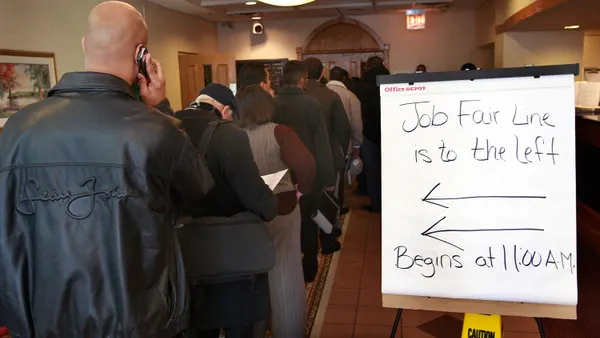Dive Brief:
- The rate of year-over-year employment growth for mid-sized companies jumped to an all time high of 11.1% in 2022, according to the National Center for the Middle Market’s Year End Middle Market Indicator.
- Nearly a quarter (23%) of middle market businesses — those with revenues from $10 million to $1 billion — said that the current size of the workforce remains insufficient for market conditions, and over half (57%) plan to “aggressively hire” into 2023, the report said.
- Between the hot labor market and the current macro environment, businesses of all sizes are vying for the same talent, said Doug Farren, managing director of the NCMM in an interview. “The question becomes, is this hiring growth going to be achievable because of some of the pressures and headwinds that they face when it comes to the labor market?” he said.
Dive Insight:
The healthcare and manufacturing sectors — manufacturing makes up around 14% of the overall middle market — reported the greatest need for people, and in terms of how they plan to attain employment growth in the new year, collaboration within their local economies is one way to go about it, said Farren.
“In Northwest Ohio, we had a chamber of commerce that helped bring together a significant number of manufacturing companies, all of them were struggling with the same issue of a lack of welders,” said Farren. The collaboration allowed those companies to partner with a local community college specializing in welding and recruit from there.
“The chamber of commerce brought in the companies that were going to guarantee job placement, and they were able to get 30 or 40 candidates through that program and then place them throughout these various middle market businesses,” said Farren.
“You don't always think of companies or suppliers in an industry that are in the same area collaborating that way. But I've seen some examples similar to that in different parts of the country as well,” he said.
Meanwhile, confidence levels of the 1,000 C-suite level executives surveyed rebounded after 12 straight months of declining — with 86% reporting confidence in their local economies, 74% in the national economy and 73% in the global economy.
“By local economy we refer to that as their city, their region,” or the area of the economy that mid-sized businesses know best, according to Farren. It is also where they tend to get most of their workforce from.
The middle market — 90% of them privately held — are somewhat immune to economic factors that may plague larger public companies.
“They're not looking at short term results. They're not looking to appease analysts on Wall Street and they're not worried about stock price fluctuations, so they can afford to take a long view,” said Farren. As a result, high profile layoffs — like those at Google, Amazon and Salesforce recently — and other types of “overreactions” like huge cuts are unlikely, he said.
“Mid sized businesses are able to kind of map out a long term strategy and they tend to stick to that strategy,” said Farren.















